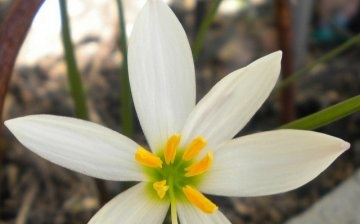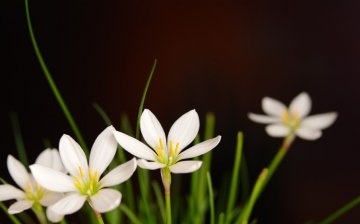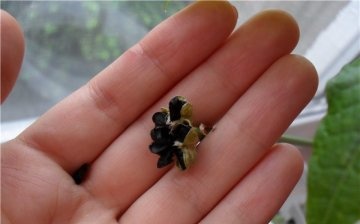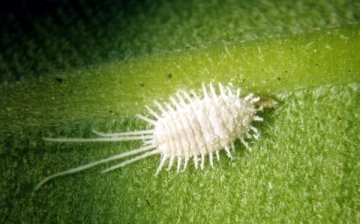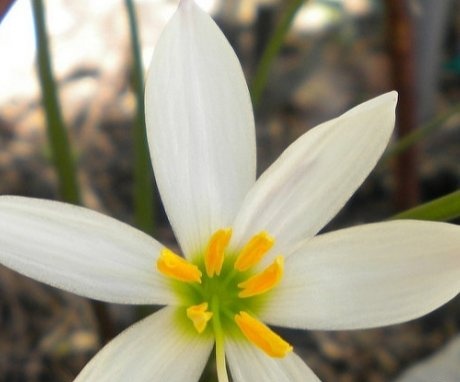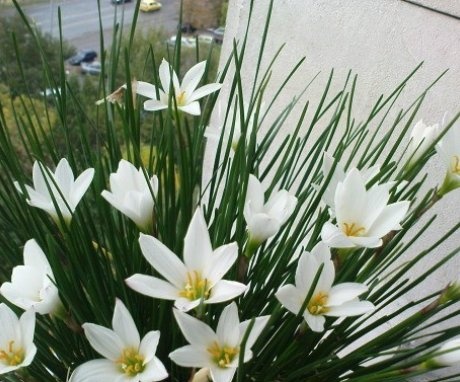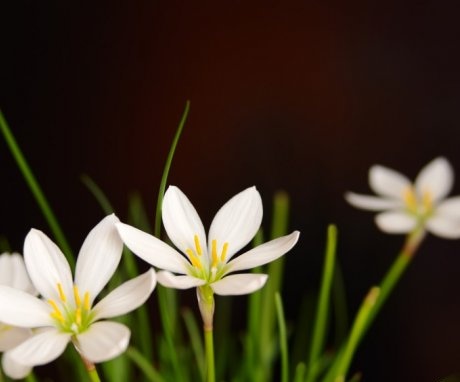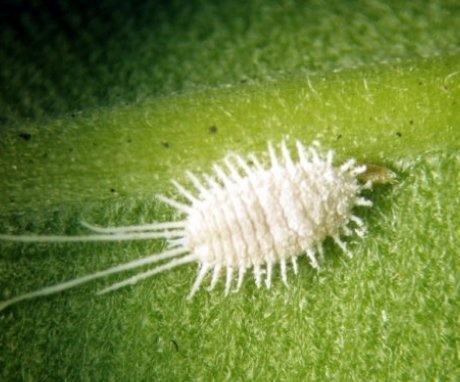Zephyranthes white: flower care at home
At home, the flower is actively increasing its green mass and begins to bloom during the rainy season, for which it received its names. In a short period of time, the plant releases leaves, and after one or two days the first flowers bloom.
Zephyranthes (Zephyranthes) is a native of the tropical and subtropical regions of America. The plant is also common in Argentina, Chile, northern Patagonia and the West Indies. The culture belongs to flowering plants from the genus Amaryllidaceae, which includes more than 80 species, but only some of them can be cultivated at home, among which the white zephyranthes.
Content:
- Zephyranthes appearance
- Providing an enabling environment for growth
- Competent approach to care
- Zephyranthes breeding methods
- Protection against diseases and pests
Zephyranthes appearance
Zephyranthes is a bulbous perennial plant. Bulbs with a diameter of two to five centimeters are ovoid or round in shape and may be covered with dark, dense skin.
The leaves of the plant are narrow and long, they can grow up to 35 cm, but their width does not exceed one and a half centimeters.
The leaf plates are painted green from dark to bright shades. The foliage of a plant is often compared to the feathers of an onion. Often the leaves appear after the peduncle. Hence the name Upstart.
Zephyranthes blooms with white flowers, but there are other varieties with a richer palette.
The flowers are five to eight centimeters in diameter and look like a six-pointed star. The flower stalk grows up to 30 cm. The life span of flowers does not exceed two days, but as soon as one wilts, another blooms in its place. Therefore, it gives the impression of continuous flowering over a long period of time. The flowering period begins in mid-summer and lasts 2-3 months, after which the plant sheds its foliage and goes into hibernation.
Providing an enabling environment for growth
Zephyranthes belongs to unpretentious plants, so it is not difficult to grow it at home. The main thing is to create acceptable growth conditions for him:
- For active development, zephyranthes needs a lot of scattered light. He also tolerates the influence of direct sunlight well. Therefore, the flower will feel good on any windowsill, but on the northern windows, the plant should be provided with additional lighting.
- When forming buds, the upstart needs bright sunlight and warmth. It grows well on verandas and balconies if the weather is stable outside. The optimum air temperature in the summer is in the range from 18 to 25 degrees. And in winter, when the dormant period begins, the temperature should be maintained at a level of 7 to 15 degrees. When the temperature drops below three degrees Celsius, the bulbs of the plant may freeze slightly. This leads to the development of diseases and death of the flower.
- For a tropical guest, medium or high humidity is suitable. If the humidity in the room is low, then the likelihood of developing diseases increases.In summer, when the weather is hot and the air becomes dry, Zephyranthes should be sprayed regularly. This helps to replenish moisture and preserves the decorative effect of the plant.
By the beginning of autumn, water lilies are preparing for rest, which can last for several months. At this time, the plant sheds its foliage. In nature, awakening occurs due to climate change, which the flower feels well. And at home, the climate is artificially regulated: the frequency of watering, air temperature and daylight hours increase.
Competent approach to care
In early spring, the plant begins to wake up, grow greens and buds. At this time, it is important to help the zephyranthes recover and gain strength. To do this, you should move the flower to a lighted place and follow some rules of agricultural technology:
- Irrigation. Watering frequency should be adjusted based on seasonal activity. During the growing season, the flower needs regular watering. The signal for carrying out the procedure is the dried soil, but it is not necessary to allow the earthen lump to dry out. You need to water the plant with settled soft water warmed up in the sun.
- Fertilization. It is recommended to feed marshmallows with liquid fertilizers enriched with trace elements. The procedure should be carried out every two weeks. Top dressing begins with the appearance of the first leaves and ends after the end of the flowering period. It is important to adhere to the recommended dosages, because an excess of fertilizer can destroy the plant. Also, do not feed flowers in extreme heat.
- Transfer... Zephyranthes are transplanted annually. Events are held in early spring. The plant capacity should be small and low. It is disinfected with a manganese solution and filled with a light nutritious soil mixture. The soil can be prepared from equal parts of turf, peat, turf, humus and sand. And on the bottom of the pot you need to lay a drainage layer. One or more bulbs are planted in containers. It is important to ensure that the necks of the bulbs remain on the surface. After transplanting, it is recommended to reduce watering.
- Wintering. Falling leaves and wilting of inflorescences serve as a signal that the plant is preparing for rest. At this time, the zephyranthes should be moved to a dark, cool place and watering should be minimized. The soil needs to be moistened occasionally so that the bulbs do not dry out.
Compliance with simple rules will help preserve the decorative appearance of the plant and ensure healthy and long-lasting flowering.
Zephyranthes breeding methods
Zephyranthes can be propagated in two ways: by sowing seeds and planting bulbs.
Sowing seeds. This method is not popular, because it requires a certain investment of time and effort. Only freshly harvested seeds are suitable for the implementation of the procedure, and flowering will not come earlier than in three years. Seed propagation is carried out according to a certain scheme:
- to get high-quality seed material, zephyranthes need to be pollinated
- ripe seeds are harvested and immediately prepared for planting
- seeds are spread on the surface of the moistened nutrient soil at intervals of 3-4 cm
- the planting containers are covered with polyethylene and placed in a dark, warm place
- the air temperature is maintained at 23-25 degrees and the soil is regularly moistened
Subject to all the rules, the first shoots will appear in three weeks. Further, the plant should be provided with standard care.
Planting bulbs This method is more affordable and less costly. In the process of development, domestic daffodils form many daughter bulbs - babies. They can be easily and painlessly separated from the mother's bulb. The resulting planting material is planted in separate containers for several pieces. Up to 15 babies can form on one mother's bulb. After planting the children, the soil should be watered abundantly and the young plants should be placed in a shaded place for rooting.Young plants will quickly grow and bloom the next year.
Protection against diseases and pests
Zephyranthes white is rarely affected by diseases and pests. The main reason for the development of ailments is excessive moisture. Most often, the plant is attacked by spider mites, whiteflies, amaryllid worms and scale insects:
- The scale insects give out by forming dark spots on the leaf plates, which are covered with a sticky liquid. If symptoms are detected, the zephyranthes are placed under running water and the insects are removed with a soft cloth soaked in alcohol or soapy water.
- Whiteflies are small insects that lay many larvae on the underside of leaves. They feed on the sap of the plant, which leads to wilting and death of the flower. Treatment consists of systemic spraying of drugs with permethrin and reduction of watering. It is also recommended to transplant zephyranthes in disinfected soil.
- Amaryllis scale insects. In the process of vital activity of insects, cotton formations appear on plants. Leaves and buds fall off. To cure a flower, you need to remove all pests and remove the affected bulbs. Subsequent treatment consists of processing zephyranthes with garlic or tobacco infusion, as well as alcohol tincture marigold... Treatments are carried out three times with an interval of 10 days.
- Spider mites envelop the bushes with cobwebs. As a result, Zephyranthes begins to wither. Treatment consists in treating the flower with insecticidal preparations and completely replacing the soil.
More information can be found in the video:
Growing problems:
- If over-watered, water lilies can rot their bulbs. To resuscitate a flower, an urgent transplant will be required, in which all damaged bulbs are removed, and healthy ones are dried well and planted in a new soil mixture.
- If home zephyranthes does not form flower buds for a long time, then this means that the temperature regime and air humidity are disturbed. It is also an indicator of overfeeding and insufficient lighting.
It is not difficult to take care of zephyranthes, but it should be remembered that this plant is poisonous. Therefore, you need to follow safety rules and do not install pots in the reach of children and pets. Some varieties zephyranthes can be grown in the garden. But this requires suitable climatic conditions. If you closely monitor the condition of the plant, then many troubles can be avoided. Zephyranthes will grow healthy and delight with abundant flowering.




